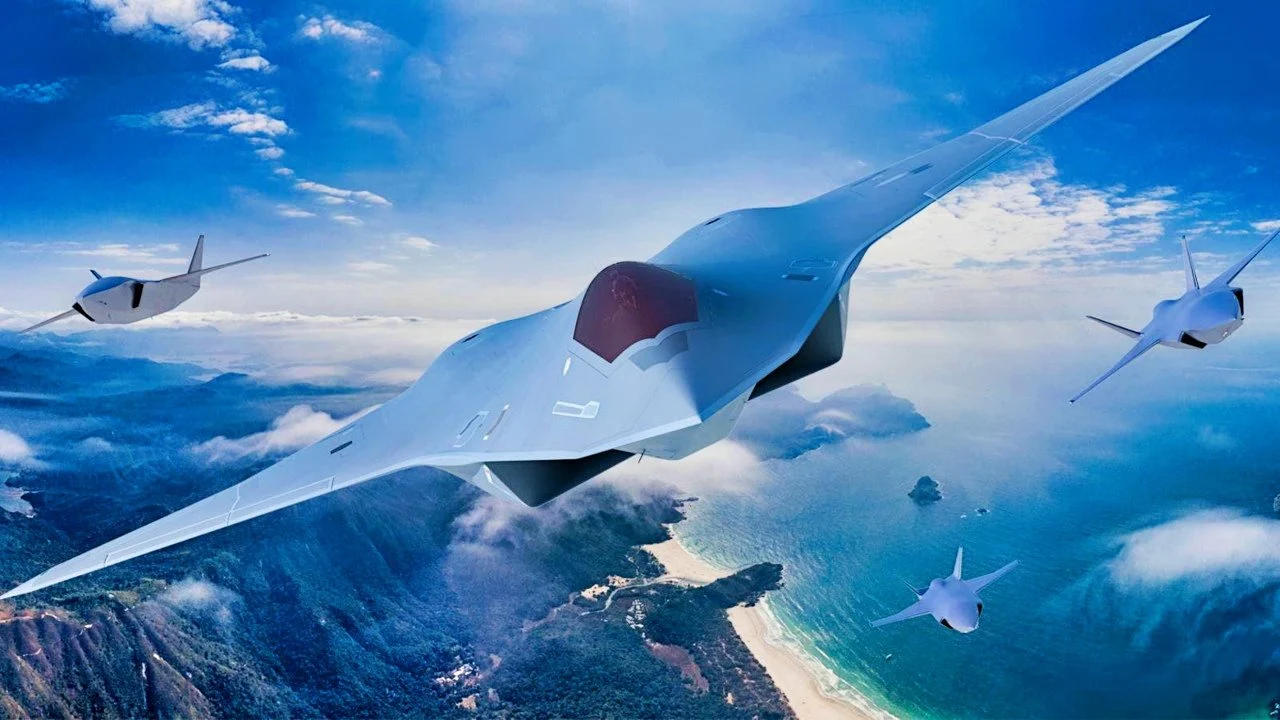
The Sinking of Moskva – Challenges for Large Surface Ships

The Russian warship cruiser Moskva, the flagship of Russia’s Black Sea Fleet, sank on 14 April 2022 during the conflict in Ukraine. The ship was hit by two R-360 Neptune anti-ship missiles. Russia confirmed that a fire erupted and the ship sank. It is the largest Russian warship to have been sunk in wartime since the end of World War II. It was also the first Russian flagship sunk since the 1905 Russo-Japanese War. Russia announced that 396 crew members had been evacuated, with one sailor killed and 27 missing.
The event has generated debates among the strategic community, the viability and survivability of large ships and aircraft carriers in the days of continuous space-based surveillance and long-range precision weapons, including the hypersonic ones. This has become even more complex considering the high cost of large ships. Would it make better sense for the Navies to invest more in submarines and fast missile boats?
Analysing the Moskva Incident
The Moskva had left the main Crimean port of Sevastopol for operations in the Ukraine conflict. It had participated in the attack on Ukrainian Snake Island garrison on 24 February 2022, and its eventual capture. It was finally hit by two Ukrainian R-360 Neptune anti-ship missiles at 20:42 on 13 April 2022. It caused serious damage and resulted in a fire. The fire engulfed the ships magazine where munitions are stored, causing an explosion. On 14 April 2022, the Russian ministry said that Moskva sank while being towed during stormy weather.
The ship was about 120 km south of Odessa when she was struck. The Ukrainian missiles were apparently fired from a land-based launcher near Odessa. The operation to sink Moskva may have been assisted by use of Bayraktar TB2 UCAVs to serve as a distraction. The Americans later confirmed that they had passed satellite cloud-penetrating synthetic aperture radar (SAR) pictures to Ukrainians but not participated in the attack. Reports also put a US maritime patrol aircraft P-8A in the area before the sinking. Analysts are questioning the need for the cruiser to be positioned so close to the shore and well within land based anti-shipping cruise missiles.
The Moskva was equipped with a triple-tiered air defence that could have intercepted the incoming Neptune missiles, with 3-4 minutes of radar detection warning. It is unclear if these systems, including the S-300F and OSA surface-to-air missiles, launching chaff or decoys, electronic jamming, or the last-ditch AK-630 close-in weapon systems were activated.
Was it over-confidence or lack of operational response by Russian crew is not clear. Russia has been blaming the bad weather for poor radar detection and response to the attack. Normally a cruiser was expected to survive several strikes from this kind of missiles. Insufficient compartments in the cruiser design may have also contributing to faster sinking. Anti-Ship Cruise Missiles (ASCMs) tend to go for the centre of the radar return, which typically is the forward section of the superstructure.
Moskva might be the largest warship ever disabled or destroyed by a missile. The loss of a flagship is always humiliating. Yet this loss did not affect the Russian naval blockade of Ukraine. It forced Russia to deploy additional air and point-defence assets in the Black Sea battle-group and withdraw vessels from close to the Ukrainian coast. The sinking of Moskva is the costliest single loss for the Russian military in the war to date, and the ship would cost around US$750 million to replace.
Major Warships Sunk in Action
| Warship | Navy | Date | Numbers Killed | Remarks |
| HMS Formidable | Royal Navy | January 1915 | 547 | English Channel |
| HMS Goliath | Royal Navy | May 1915 | 570 | Dardanelles |
| SMS Pommern | Imperial German Navy | June 1916 | All on-board | North Sea |
| Danton | French Navy | March 1917 | 296 | Mediterranean Sea |
| HMS Royal Oak | Royal Navy | October 1939 | 833 | North Atlantic |
| Bismarck | Germany | May 1941 | 2,086 | North Atlantic |
| USS Arizona | USA | December 1941 | 1,177 | Pearl Harbour |
| Roma | Italy | September 1943 | 1,393 | Mediterranean Sea |
| Scharnhorst | Germany | December 1943 | 1,932 | North Cape |
| Yamashiro | Japan | October 1944 | 1,626 | Surigao Strait |
| Yamato | Japan | April 1945 | 3,055 | East China Sea |
| General Belgrano | Argentina | May 1982 | 323 | South Atlantic |
Long Range Surface Attack Missiles and Stand-off Weapons
A cruise missile is a guided missile used against terrestrial targets that remains in the atmosphere and flies the major portion of its flight path at approximately constant speed. Cruise missiles are designed to deliver a large warhead over long distances with high precision. Modern cruise missiles are capable of travelling at high subsonic, supersonic, or hypersonic speeds, are self-navigating, and are able to fly on a non-ballistic, extremely low-altitude trajectory.
Standoff weapons are missiles or bombs which may be launched from a distance sufficient to allow attacking personnel to evade defensive fire from the target area. Typically, they are used against land- and sea-based targets in an offensive operation. Stand-off weapons include cruise missiles, glide bombs and short-range ballistic missiles.
Hypersonic Weapons
Russia launching hypersonic missiles during the Ukraine war heralds a new era of warfare, introducing the cocktail of high speed and lethality. The Russian claims of launching Kh-47M2 Kinzhal “hypersonic missiles” to destroy an ammunition warehouse in western Ukraine has been confirmed by the U.S Administration. The global weapons race is already heating up with hypersonic weapons technology demonstrations by major players like Russia, China and the USA having put their money where bang is. India is the next player on the block and is accelerating the hypersonic technology development.
Hypersonic weapons are not just about speed but also manoeuvrability and low-altitude flying. Hypersonic flight should be sustainable within the earth’s atmosphere. The hypersonic flight at low-altitude must be sustained for a period lasting in minutes, and should have ability to execute manoeuvres. Hypersonic weapons could be rocket-boosted Hypersonic Glide Vehicles (HGV) or Hypersonic Cruise Missiles (HCM). ‘One mile per second’ is the hypersonic regime and uses kinetic energy which is a function of the square of velocity. A one-kilogram object delivered precisely at such high speed can be more destructive than one-kilogram of TNT.
The low-altitude path helps mask HCMs, making invisible to early warning radars. This when combined with possible last minute manoeuvre would reduce chances of interception. Operational use of conventional hypersonic weapons against high-value targets such as aircraft carriers or strategic ground targets has to be factored. The kinetic speed will create a significant damage even with a small sized warhead.
Defence against Hypersonic Weapons and Cruise Missiles
It is very difficult to defend against hypersonic weapons because they are too fast. Cruise missiles have low radar cross-section, and difficult to detect. An HGV would give at best only six minutes prior to impact. It will be even lesser for HCM. There will be a high degree of uncertainty about their destination. Hypersonic weapons thus add surprise to long-range strikes, and may penetrate even the most advanced air defence systems. Expensive space sensor layers maybe required to detect HCMs. In the long term directed-energy systems, in particular, laser weapons may be able to take-on such threats.
Hypersonic Anti-Ship Missiles (HASM) Threat
China continues to build aircraft carriers with an aim to catch up with USA. Indian Navy had its eyes on a third aircraft carrier. All this is happening at a time when hypersonic weapons are trying to disrupt the status quo. Aircraft carriers cost a lot of money to build and large resources to maintain and defend. The threat posed by HASM is of great concern says U.S. DoD in their missile defence review released in January 2020. It warns that the Chinese weapons could hold carrier battle groups at risk. Their inertia alone can cause enough damage to send a carrier to sea-bed.
Complexity of Defending Aircraft Carrier or Large Ships
Aircraft carriers are viewed by many as the Navy’s crown jewels, and naval aviation has grown into a primary offensive arm with global reach. Typically, a carrier battle group includes ships equipped with advanced air-and-missile defence systems. But HASMs pose a unique threat with a complex intercept geometry with low success rate. HASMs are much smaller as targets, and difficult to see till much closer. Air-launched and underwater-launched HASMs add to the complexity due to short flight-time.
The debate over the efficacy of carriers in high-end conflict is nothing new, more so since funds are scarce. Sinking of Russian Cruiser Moskva in the Ukraine conflict by a normal cruise missile has also reignited the debate. Potency-wise, what could be more threatening, 2,000 precision HCM or one new carrier, with both costing roughly same? Will hypersonic missiles replace aircraft carriers in the defence budgets? China has always relied on thousands of long-range precision conventional strike assets. Prompt strike weapons could be a good investment. U.S. is looking at placing hypersonic weapons in the Pacific as a priority.
Diehard Naval Aviators Stand by Carriers
Die-hard naval aviators feel that finding the moving aircraft carrier, often changing its course and speed, thousands of kilometres away, in a high threat environment, is not easy. Also, like weapons against submarine threat evolved, same will happen against HASMs soon, they feel. Some even claim that naval aircraft performing combat air patrols could potentially shoot down incoming missiles before they reach the carrier strike group using AAMs designed to shoot supersonic aircraft. U.S. Navy has been pursuing hypervelocity projectiles that could be launched from electromagnetic rail-guns or powder guns. They are smaller and cheaper than interceptor missiles, and a ship could carry more of them. Ship-based lasers, high-powered microwaves, electronic warfare, or decoys could also make things difficult for HASMs.
Meanwhile Naval aviation is pushing hard to stem the tide of criticism and contend that the lethality, agility and resilience of a full-sized nuclear-powered aircraft carrier and its air wing. A carrier strike group, by its mere presence, can shape events in the nation’s favour, they claim. Notwithstanding, the aircraft-carrier served well for nearly a hundred years, and like manned aircraft, at some point, the game has to be up. Threat of hypersonic weapons to high value targets like aircraft carriers is real. Of course, there is still a few years of debate ahead.
Autonomous Small Agile Ships and Underwater Vehicle
Worldwide, there are now more than 1,000 Maritime Autonomous Surface Ships (MASS) operated by more than 53 organizations. For military use these are small, fast and agile. They eliminate human error, reduce crewing costs, increase the safety of life, and allow for more efficient use of space in ship design and efficient use of fuel. As early as the end of World War II, remote-controlled Unmanned Surface Vehicles (USV) were used in minesweeping applications. Advances in USV control systems and navigation technologies have resulted in USVs that an operator can control remotely (from land or from a nearby vessel). Military applications for USVs include mine-hunting, anti-submarine operations, surface attack, armed unmanned surface vessels, reconnaissance, surveillance and intelligence, surface warfare, asymmetric warfare, armed escort, force protection, refuelling and replenishments, and strategic facility security. Medium sized ones will undertake Electronic Warfare (EW).
Advantage Military Submarine
For long, military submarines have had anti-surface ship warfare role. They were particularly effective in sinking transatlantic shipping in both World Wars, and in disrupting Japanese supply routes and naval operations in the Pacific in World War II. They also had mine-laying role. They were also used for special operations, for intelligence gathering, and to rescue aircrew. Submarines could carry cargo through hostile waters or act as supply vessels for other submarines. They had anti-submarine role. Nuclear powered submarines with ballistic missile and submarine-launched cruise missiles gave submarines a substantial and long-ranged ability to attack both land and sea targets with a variety of weapons ranging from cluster bombs to nuclear weapons. Its capacity to remain concealed in the depths of the ocean is a great defence. Modern submarines are built with an emphasis on stealth, making them more difficult to detect. A concealed military submarine can force an enemy navy to waste resources searching large areas of ocean and protecting ships against attack.
Future is Small, Agile and Stealth
The future of naval crafts is more in patrol boats, smaller frigates, stealth submarines, and autonomous surface and sub-surface vehicles. It is operational value for money. The survivability of the large, expensive surface ships has already been put to question. They will be floating targets, and expensive follies. A defender’s survival is firstly in escaping detection, and if engaged be able to defeat the attack.
Larger number of platforms with dispersed, networked sensors and weapons will be a force multiplier. Smaller vessels will have small Radar Cross Section. They leave a much smaller wake for satellite-based detection. Larger ships also move slower. Yes, they do have the advantage of real estate for more weapons and electronics. They would also have more power generation for laser weapons. Smaller ships may rely more on electric propulsion. Similarly stealthy submarines have significant advantage. While U.S. Navy continues to believe in large ships, the China’s PLA Navy has chosen to overtake in numbers and agility rather than tonnage.
The Navies are being transformed. The Status Quo is being challenged. Is the Carrier-era heading towards its end? The new ship-building programs are tending to reject the homogenous force of intermediate-size multi-mission surface combatants that characterized the carrier era and instead seeks to build a heterogeneous group of small, intermediate, and large battle network combatants designed to provide assured access to coastal waters. Get fast, get connected, get modular, get off-board, and get unmanned is the new mantra.
****************
Disclaimer
The opinions expressed in this article are the author’s own and do not reflect the views of Chanakya Forum. All information provided in this article including timeliness, completeness, accuracy, suitability or validity of information referenced therein, is the sole responsibility of the author. www.chanakyaforum.com does not assume any responsibility for the same.
Chanakya Forum is now on . Click here to join our channel (@ChanakyaForum) and stay updated with the latest headlines and articles.
Important
We work round the clock to bring you the finest articles and updates from around the world. There is a team that works tirelessly to ensure that you have a seamless reading experience. But all this costs money. Please support us so that we keep doing what we do best. Happy Reading
Support Us





















POST COMMENTS (1)
Kalidan Singh